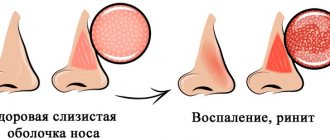About the plant
This is a biennial plant reaching a height of two meters. They began to call it that because of the toxic effects it has on the body. Since in the first year hemlock consists of a bunch of basal leaves resembling parsley or carrots, it can easily be poisoned. The first signs of poisoning are headache and dizziness. The stem of the plant grows in the second year. It becomes branched, hollow, with a bluish tint and has dark red spots at the bottom. White small flowers are folded into complex umbrellas. The fruit is an achene. Grows everywhere except the Far North.
“Conium” (homeopathy) is made from it. We will consider indications for use later.
Who is the conium intended for?
The constitutional type of conium is mainly old people who walk slowly. Their gait can be called trembling. Patients also complain of weakness during walks and problems with the limbs. In fact, all the ailments of older people correspond to this homeopathic remedy.
The conium type is people with loss of strength, hypochondria, disorders of the genitourinary system, and memory problems.
In addition to the patients described above, conium is also recommended for people suffering from scrofula and cancer.
History of use in homeopathy
The drug was introduced into homeopathy by Hahnemann in 1825. This product has been thoroughly tested twice. The results of the first experiment are posted in “Pure Medicine”, and the results of the second – in “Chronic Diseases”. Hahnemann was interested in this remedy because the works of the Austrian physician Sterk described cases of complete cure of patients with severe forms of illness, as well as death, that were caused by hemlock. Hahnemann used hemlock in small proportions and the results were positive. This is the basis for the modern use of Konium. In homeopathy, the indications for use are extensive.
The development of the drug is based on Hahnemann's trials and medical studies of side effects. The drug has a complete effect on the entire body. In homeopathy, Conium is considered a constitutional substance that is used to treat patients with chronic diseases.
How does conium affect the patient’s body?
Weak toxic doses of conium cause a feeling of relaxation and loss of strength. The person cannot maintain balance and complains of vision problems. At the same time, consciousness is not disturbed, remaining clear. After some time, the ability to move disappears. If the dose is increased, you may experience dizziness, increased heart rate and breathing.
In the case of a strong dose that enters directly into the blood, excitement occurs. Then the lower limbs weaken, followed by the upper ones. The pupils dilate, and the ability to see anything gradually disappears. In conclusion, paralysis of the respiratory muscles and death occurs.
The effect of the drug in strong doses was described above. Its influence on motor centers is of primary importance. However, homeopathic experiments with low dosages prove that conium also acts on the glands and skin. In addition, it should be noted its effect on the mammary glands (the drug resolves tumors). A similar effect occurs on the ovaries and testicles.
Finally, the pathogenesis also mentions the influence of the conium on the larynx and laryngeal nerves. The drug causes constant coughing attacks.
Side effects
If you follow the dosage, the product is well tolerated. Dermatitis can develop from the ointment, and an allergic reaction when consuming granules. Blood pressure may also decrease. Symptoms of intoxication if the dose is exceeded are possible: nausea, vomiting, diarrhea, dizziness, suffocation, tachycardia, numbness, loss of consciousness.
If any negative reactions occur, it is better to stop using. Regardless of the indications for use of the “Conium” (homeopathy) product.
Indications for use of conium
The homeopathic medicine conium is recommended for dizziness and tumors of the mammary glands, especially if they were caused by injury. Helps with scrofula and some types of pulmonary consumption (cough occurs mainly at night). The drug is prescribed for acute inflammation of the spinal cord and paresis of the upper eyelids.
The drug conium is effective for facial neuralgia, a symptom of which is pain in the infraorbital nerve, especially at night. Helps cope with excess hydrochloric acid in the stomach and stomach cancer.
The next group of ailments from which homeopathic remedies can help are eye diseases. The medicine also cures cough (persistent, dry, which becomes stronger at night, or consumptive, which is caused by deep breaths).
Finally, conium can help with prostate diseases, the main symptom of which is urine released drop by drop.
CHARACTERISTIC
Loss of strength in women during and after menopause, after acute illnesses.
Hardening of the glands - to the hardness of wood, mammary glands and testicles in persons predisposed to cancer; after a bruise or wound, hardening is sometimes accompanied by burning pain.
The mammary glands become enlarged and painful during each menstruation, worse when walking or the slightest shock.
Dizziness, especially when turning over in bed; with slight movement of the head or even the eyes; You must keep your head completely still. Dizziness when turning head to the left ( Colocynthis
); dizziness in old women suffering from diseases of the ovaries and uterus.
Weakness of the genital organs - the desire is preserved, but there is no possibility of satisfying it; erections are short-lived and stop during intercourse.
Intermittent flow of urine is very typical (prostate damage in old people).
Day and night sweats, as soon as he falls asleep or as soon as he closes his eyes.
Vomiting dark masses, “coffee grounds”, with intense pain.
Uncontrollable craving for salt with aversion to milk, which is poorly tolerated.
Pain. Various, in joints and muscles, almost always appear at rest and at night, decrease with movement.
For cancer of the mammary glands and other organs, pain Conium
burning, stabbing and shooting.
Chair. Constipation is always accompanied by tenesmus and weakness after bowel movements. Diarrhea is much more common; stools are cloudy, sometimes very liquid, often with frequent urges. They are accompanied by colic and large bloating. The stools are very offensive and the stool is sometimes involuntary during sleep; it is also accompanied by tenesmus. Conium
- a remedy for diarrhea in weak, trembling old people who sometimes suffer from urinary incontinence.
Menstruation is scanty, delayed, short-lived, suppressed, with small red pimples all over the body. Amenorrhea after a cold, after putting hands in cold water. Leucorrhea like milk, thick, corrosive.
Release form and chemical composition
This preparation is available in the following forms: ointment for external use, drops in potencies D3, C3, C6 and higher, and granules for oral administration in potencies D3, C3, C6 and higher.
The active ingredient of the ointment is Konium D1 tincture, and the auxiliary components are medical petroleum jelly, as well as anhydrous lanolin.
The spotted hemlock plant has the following chemical composition:
- coniine;
- conhydrin;
- pseudo-conhydrin;
- g-coniceine;
- methylkoniine;
- quercetin;
- kaempferol.
Method of administration and dosage
It is recommended to apply Konium ointment to the skin in a thin layer immediately before bedtime. It is advisable to apply a bandage over it. This is how the ointment is used during the first week. Then move on to 2-3 applications per week. The course of treatment is 2-3 months.
The granules are taken sublingually (under the tongue). The standard daily dose is 40 granules (5 doses of 8 granules each). The course of treatment is one month. If necessary, the course can be taken again, but only after a break.
The dosage of the drug is determined solely by the attending physician based on the severity of the disease, as well as many other aspects that are not taken into account in traditional medicine.
Contraindications
According to the annotation for the drug, the use of Konium is contraindicated in the presence of hypersensitivity to any of its components, as well as in children and adolescents under 18 years of age.
During pregnancy, Conium is prescribed only if the expected benefits to the woman outweigh the potential risks to her child. If treatment is indicated during lactation, breastfeeding should be discontinued.
Conium is prescribed, but with great caution and under constant medical supervision to patients with gastritis, ulcers and stomach cancer, if they are accompanied by cutting, burning and/or stabbing pains.
PHYSIOLOGICAL ACTION
Imbert-Gurbeir, in a series of essays published in 1875 in the journal "Medical Art", irrefutably proved that it was Conium maculatum
, and not another variety of hemlock, was given to Socrates and caused the death of the sage, of which we find an excellent description in Phaedo. These are pages that cannot be re-read without excitement. (See Kravkov. Pharmacology. Ed. 1911, p. 323, vol. 1).
“Until then, almost all of us had enough strength to hold back tears; but seeing how he drank, and after he drank, we no longer controlled ourselves. Despite all my efforts, tears flowed in such a stream that I was forced to cover myself with my cloak; I was not mourning Socrates’ grief, but my own, at the thought that I was about to lose a friend. Crito could not hold back his tears and left before me...
...Meanwhile, Socrates, who was still walking, said that he felt heaviness in his legs, and lay down on his back, as the watchman ordered him. Then the latter approached Socrates, examined his feet and thighs, squeezed his foot tightly and asked if he felt. Socrates replied that he did not. Then he squeezed his thighs and, rising higher, showed us how cold and numb the body was. He felt him again and said that only the cold reaches the heart, Socrates will die. The entire lower part of my stomach was already cold. Then, revealing himself (he was covered), Socrates said (these were his last words): “Crito, we owe a rooster to Aesculapius, do not forget to bring this gift.” “This will be done,” replied Crito. “Won’t you tell us anything else?” - There was no answer, and a little later he made a convulsive movement. Then the watchman opened it completely; Socrates' gaze was motionless. Crito, seeing this, closed his mouth and eyes..."
Two thousand years later, Christison writes: “In various experiments made with a very strong alcoholic extract from fresh seeds, the only phenomena were paralysis, first of the voluntary muscles, then of the pectoral muscles, and lastly of the muscles of the diaphragm, paralytic asphyxia with slight convulsive jerking of the limbs.” .
The first results of weak toxic doses are felt half or three quarters of an hour after ingestion of the poison; they consist of a feeling of languor, relaxation, with a drop in muscle strength; the gait becomes unsteady, the knees become weak, and vision is blurred. At the same time, consciousness remains calm and clear, sensitivity is preserved; the impairment of motor ability disappeared an hour after the onset of all the above-described phenomena. As the dose increases, dizziness, precardiac anguish, palpitations, and increased breathing are observed.
Finally, with strong poisonous doses, excitation phenomena are initially observed, which do not occur when hemlock leaves or seeds are taken orally, but are observed only when the dose of poison suddenly penetrates the blood. Then follows a period of collapse: weakness of the lower extremities, making the gait sway, then first muscle strength in the arms is lost, and soon all possibility of voluntary movements disappears. Sensitivity progressively decreases. The pupils are dilated and motionless, and visual disturbances are observed. Finally, paralysis of the respiratory muscles leads to asphyxia and death.
This is the main action of Conium
in a strong dose; it acts on the motor centers, for which, as Harley puts it, it is a “true hypnotic.” The oculomotor nerve is severely affected: there are accommodation disorders with dizziness, ptosis, dilated pupils, and diplopia.
Experiments by homeopaths, carried out with weaker doses, taken over a long period of time, have undoubtedly proven its effect on the glands and skin.
Conium
has an almost specific effect on the mammary glands, dissolving tumors and swellings. Dunam speaks of the same effect on the ovaries and testicles.
When applied topically, Harley observed “a dry, scaly rash on the skin, in places crescent-shaped, and very severe irritation of the skin with a dark copper color, very similar to the irritation of leprosy.”
Pathogenesis also speaks of its effect on the larynx and laryngeal nerves, so often confirmed by practice that there is no doubt. This action is expressed in “a dry, short, almost continuous cough, worsening in bed.”
Excerpts from the book by I.V. Dolinina “Find out your type and get cured.”
This is a hemlock plant. Distributed everywhere, reaches a height of two meters. In homeopathy, flowers containing several types of alkaloids are used.
The toxic effect of hemlock has been known since ancient times. In everyday life, poisoning with it is possible when conium is confused with parsley and added to salad. And children can be poisoned by holding a whistle made from the tubular stem of a hemlock tree in their mouth.
The plant was known as a medicinal plant back in the 5th century BC. It was widely used by Ibn Sina, and later - in the 18th and 19th centuries - by Dr. Sterk (in Austria) and Dr. Harley (in England). Conium was used for scrofula, as an anticonvulsant and analgesic, and also as an anticancer agent.
Hahnemann introduced conium into homeopathy. It was found that the dynamized drug Konium helps well with diseases of the nervous system (dizziness, body tremors, paresis and paralysis, multiple sclerosis), eye pathologies (ptosis of the eyelids, cataracts), digestive organs (gastritis, spastic colitis), respiratory organs (pneumonia in the elderly ), diseases of the genitourinary system (impotence, tumors of the uterus, ovaries, prostate adenoma, mastopathy), skin problems (eczema, varicose ulcers).
Through long-term testing, it was discovered that persons for whom Conium is particularly suitable have a number of similar mental traits. This allows us to identify the Konium psychotype.
HOME GROUSE
I'm lying there, lazy amoeba,
I look, squinting my left eye,
Into the enameled sky
Like in an overturned basin.
V. Khodasevich
This quatrain reflects the appearance of a decompensated Conium, which really turns into a sedentary “amoeba” (worse from movements, better lying down, in the heat).
Homeopathic manuals report about such a person: “slow fading of emotions”, “weakening of desires”, “closed with shutters from others”, “despises everyone”, “irritability and disgust”, “quarrelsomeness and taciturnity”, “quarrelsomeness and depression”, “superstitions” and melancholy." Neurasthenia – treatment with homeopathy
Almost all of Conium's problems are rooted in its sexual sphere. Here it should be distinguished from Staphysagria, which “wants, but cannot” due to external circumstances. Konium “still wants to, but can’t really do it anymore” due to endocrine changes in his body.
Homeopathic manuals report about the sources of his problems: “consequences of the loss of a sexual partner”, “result of suppression of sexual desires”, “depression from abstinence”, “tormenting erotic thoughts”, “progressive sexual problems”, “propensity towards homosexuality”. Many reference books say that this medicine is “for old maids” and “prematurely aged men with sexual problems.”
The main complaints of such a patient: dizziness, unstable blood pressure, general weakness with trembling, memory loss.
Konium is a man of average height, loose build, with sloping shoulders, a thick lower body, and large flat feet. The body is soft and flabby. The skin is pale, and the hands are marbled. Hands and feet are often covered in cold sweat.
In women, the so-called “menopausal mound” forms early - fatty deposits in the area of the seventh cervical vertebra with a translucent network of thin vessels. And in men, gynecomastia is observed, that is, the formation of mammary glands according to the female type. They have almost no hair on the chest and even the chin.
The head of Conium is usually round, widened at the temples. The forehead is low, the eyebrows are sparse and uneven. The hair is light and thin. The eyes are round, sometimes bulging, light gray, with thick (“like a hippopotamus”) eyelids. The nose is short, sometimes potato-shaped. The mouth is small, the teeth deteriorate quickly. The neck is short. The ears are small, tightly pressed to the head. The chin is rounded.
Conium men may have a high-pitched voice due to endocrine changes. A decrease in the function of the pituitary gland, thyroid and gonads leads to their (initially compensatory) increase. But compensation most often follows a pathological path. Hence we have all the symptoms of nodular conium seals. These are nodes in the thyroid, parotid, mammary, prostate glands; in the testicles and ovaries, in the uterus and lymph nodes.
We should not forget about Conium as a great “traumatic agent”. It (together with Arnica) treats the effects of brain contusions (headaches, dizziness, insomnia, nightmares). Phobias (fears) - treatment with homeopathy
If at the age of fifty, Konium may still have pituitary obesity, then after seventy it can give way to cachexia, that is, complete exhaustion.
What is the character of Conium? The compensated type has such qualities as: independence, caution, impressionability, good memory, observation in detail, a sense of family, healthy conservatism, caring, tolerance, thrift, hard work, conscientiousness, thriftiness.
During the process of decompensation, many of these properties turn into their opposite. Developing: vulnerability and touchiness, isolation only on oneself, inhibition, anxiety, imbalance, fears (illness, death), inertia, laziness, susceptibility to bad habits, negligence, spinelessness, superstitions with ostentatious religiosity, capriciousness, grumpiness, pickiness. As homeopathic manuals write, “in everyday life such a person is known as a grouch.”
Conium becomes very stubborn, and, as they say, “to its own loss.” Like Sepia, he begins to dress in black. Current events seem boring to such a person. People are intolerable, the future is bleak.
Konium plunges into himself because he is afraid of misunderstanding from others (and even worse - ridicule). He becomes apathetic, depressed, with a feeling of incomprehensible guilt. Sympathy can only strengthen negative emotions, because it does not eliminate their cause at all. Conium begins to feel “that time is passing too slowly”, that “all efforts are in vain.”
He begins to perceive the world in black and white. Shades and different facets of the same phenomenon disappear. All that remains is: right and wrong. This is where the desire for dictatorship, intolerance of objections, ossification, and quarrelsomeness stems. There is a need for rituals, which usually concerns nutrition and a “healthy lifestyle”.
If the ability to analyze remains, then an uncontrollable desire appears to dissect something into smaller parts (starting from analyzing a theory and ending with tearing paper into very small pieces). Konium is not interested in a holistic picture of the world or events.
More details in the books of Dolinina I.V.
What professions can a compensated Konium choose? He is able to connect his life with farming, restaurant business, engage in small trade, arts and crafts, photography, and pedagogy (primary classes). A Konium woman may well be satisfied with the role of a housewife. In this she is similar to the Calcium carbonicum woman.
Only Calcium will be more soulful and sociable. And Konium is more reasonable and reserved. Calcium has a greater chance of having several children. Konium usually has one child, with whom big problems arise during adolescence.
The Konium man is a homebody. He is unlikely to have romantic interests on the side, because... his libido is not even enough for his wife.
And the Conium old man... He, of course, is stalked by senile psychosis, paralysis, prostate adenoma and a bad character. Bulimia, anorexia - treatment with homeopathy
But nature created a piece of hope for such a sad fate in the form of the homeopathic drug Konium. The name itself, according to one version, comes from a Greek word meaning “dizziness,” and according to another, from an even more terrible one, meaning “to kill.” It is known that the great philosopher Socrates accepted a cup of conium, condemned to death by an Athenian court.
“Everything is poison, and everything is medicine,” said Paracelsus.
Dynamized Conium has taken a strong place among the drugs that help to live old age with dignity and delay the time of earthly departure, and come to terms with inevitable losses.
Sign up for treatment 8 (495) 150 – 60 – 95
CONIUM IN HISTORY
(Oscar Wilde)
This English writer was born in 1854 in Dublin into the family of a doctor. The Wilde House was famous for its poetry and musical evenings, which were attended by many celebrities. So Oscar, while still a boy, had the opportunity to become involved in high art. Since childhood, he was fascinated by ancient Greek literature, reading Aeschylus and other ancient classics in the original.
After leaving school, Oscar entered Oxford. He was not an exemplary student and attended only those classes that he liked. Wilde already believed then: “What is really worth knowing cannot be taught by anyone.”
During his studies, he lived in an old house overlooking the Thames. An exquisite bohemian spirit reigned in Oscar's apartment: the table service was in harmony with the color of the curtains, antiques were in harmony with theatrical household items.
Wilde stood out both for his appearance and his demeanor. He was tall, with a somewhat effeminate figure. There were no signs of hair on her pale face, but her long curly hair reached her shoulders. The young man's costume was distinguished by its elegant casualness. There was always a violet in his buttonhole and a scarab-shaped ring on his finger.
Those around the young man were ambivalent about him. On the one hand, she caught his every word, and on the other, she was jealous. A comedy was staged at the local theater, where the main character presented a direct parody of Wilde, singing the couplets: “I am poetic, I am aesthetic, I am truly akin to Narcissus.”
Oscar himself only added fuel to the fire. Almost any of his statements was taken up as an aphorism. Wilde often said: “It is the duty of every reasonable man to disagree with three out of four Englishmen on any matter.” Once, when moving across the border, he answered the customs officer: “I have nothing to add to the declaration except my genius.”
At the age of thirty, Wilde married twenty-six-year-old Constance Lloyd. She came from a family of lawyers, lost her father as a child, and her mother remarried. Before the wedding, the girl was looked after by her grandmother; her source of livelihood was her grandfather's inheritance.
The newlyweds were deeply in love with each other. When Oscar was away, he sent his wife two telegrams a day and was ready to rush from the most remote place to be with Constance for at least an hour. Three years after their marriage, the Wilde couple already had two sons. The father spoiled the boys - he constantly carried them in his arms, played with them, and told entertaining stories. But the family idyll was not destined to last long.
A few years after the wedding, Constance began to notice that Oscar was much more interested in beautiful young people than in his young wife. It is likely that Wilde was initially bisexual, but in his mature years a homosexual tendency prevailed in him. Having learned about her husband's relationship with young Robert Ross, Constance was shocked. However, she did not file for divorce, wanting to save the family.
To date, the nature of same-sex love remains poorly understood. Experts name many factors in the formation of such an orientation. This is a hormonal imbalance (in Wilde’s case, external effeminacy was confirmation of this), peculiarities of upbringing in early childhood (Oscar’s mother wanted a girl to be born, and at first she dressed the child in dresses), narcissistic character traits (an example of this is the writer’s lifestyle).
The ideal of a homosexual is the “page boy.” For such people, the initial interest in women is repressed into the subconscious, and sexual attraction is shifted to men. Often a homosexual person prefers a partner who is somewhat similar to his mother.
The development of attraction can occur in various ways. But in Wilde's case it was fundamentally narcissistic in nature. Oscar chose young men who resembled himself as his lovers. And he cared for them with the same tenderness that he wanted to receive from his mother in childhood. Thus, he seemed to enjoy loving himself. By the way, in Ancient Greece, so beloved by the writer, homosexuality was common. This was due to the fact that the upbringing of children in those days was carried out by male slaves.
The peculiarities of his personal life did not interfere with Wilde’s development as a talented writer. He composed fairy tales, poems, and prose. The novel “The Picture of Dorian Gray” is still well known throughout the world. In the preface to it, the author expresses interesting thoughts about art: “Those who are able to see its high meaning in beauty are cultured people. They are not hopeless. But the chosen one is the one who sees only one thing in beauty: beauty. In essence, Art is a mirror that reflects whoever looks into it, and not life at all. All art is completely useless."
For Wilde, art lay beyond practical use and, perhaps, beyond generally accepted morality. Contemporaries appreciated only the plays of Wilde the playwright. The success of An Ideal Husband, The Importance of Being Earnest and Lady Windermere's Fan exceeded all expectations. They captivated us with their graceful ease, subtle humor, and genuine naturalness. When the author was asked what the secret of his triumph was, Oscar usually answered: “You must notice the serious in any trifle and the trivial in everything serious.”
In 1895, a month after the resounding success of Wilde's next play, the trial of the writer took place. The evidence included a letter from Oscar to Lord Alfred Douglas. Wilde's young friend himself did not appear at the trial.
English society handed down a harsh sentence to the writer. The judge stated: “The crime with which the suspect is accused is so serious that it is necessary to restrain himself with all his might in order not to give free rein to the feelings that overwhelm every decent gentleman. People who are capable of this seem to have lost all sense of shame. This is the most terrible process I have ever been involved in."
Oscar Wilde was imprisoned in Reading prison, where he spent two years. The court verdict deprived him of his freedom, money and social position. But even earlier, the writer was ready to pay the bills: “I must love and be loved, no matter what price I have to pay for it.”
“The Ballad of Reading Gaol” can be called the pinnacle of Wilde’s poetic creativity. In it, he describes with naked truthfulness the condition of a death row prisoner who killed his beloved. This confessional poem reveals both the guilt for the pain caused to Constance’s wife and the paradoxical feeling of the condemned man’s innocence. The described execution of the prisoner is in some sense likened to the crucifixion of Christ.
While serving his sentence, Oscar did not become embittered, but continued to show human feelings. It is known that he stood up for two teenagers who were imprisoned for stealing rabbits. Wilde paid the fine and they were released.
Oscar subsequently wrote an article denouncing the prosecution of children: “The treatment of children is appalling. They are carried out by people who do not understand child psychology. A child is capable of accepting punishment coming from an individual, but not the punishment of society. He doesn’t even know what society is.”
As soon as Wilde was released from prison, he left England and settled in France. His ex-wife paid him a pension. Alas, Constance died at the age of forty. And two years later, at the age of forty-six, Oscar Wilde himself passed away. Shortly before his death, he admitted to one of his friends: “I have no need to write, because I have learned the meaning of life. You cannot write about life - you can only live it. And I lived."
It is not easy for a homeopath to conclude what type Oscar Wilde was. In his character, traits of Phosphorus, Tuberculin, and Platinum are visible. But if we evaluate the writer’s personality as a whole, then Konium’s version has a greater right to exist.
Let us remember that the main problems of a person of this type are rooted in the sexual sphere. Due to endocrine changes, Konium has an effeminate appearance and is prone to unconventional sexual orientation.
Wilde lived the life of a compensated Conium, demonstrating to the world the positive Conium traits: independence, observation, impressionability, caring, good memory. The writer passed away before the problems of the elderly Konium overtook him. Oscar said more than once that he did not want to become a grumpy, trembling old man, and by the will of fate he escaped this fate. Therefore, we remember him as a young, witty, extravagant, proud and, of course, deeply talented person. More details in the books of Dolinina I.V. “Character and health”, “Find out your type and get cured”, “Greats and homeopathy”.











